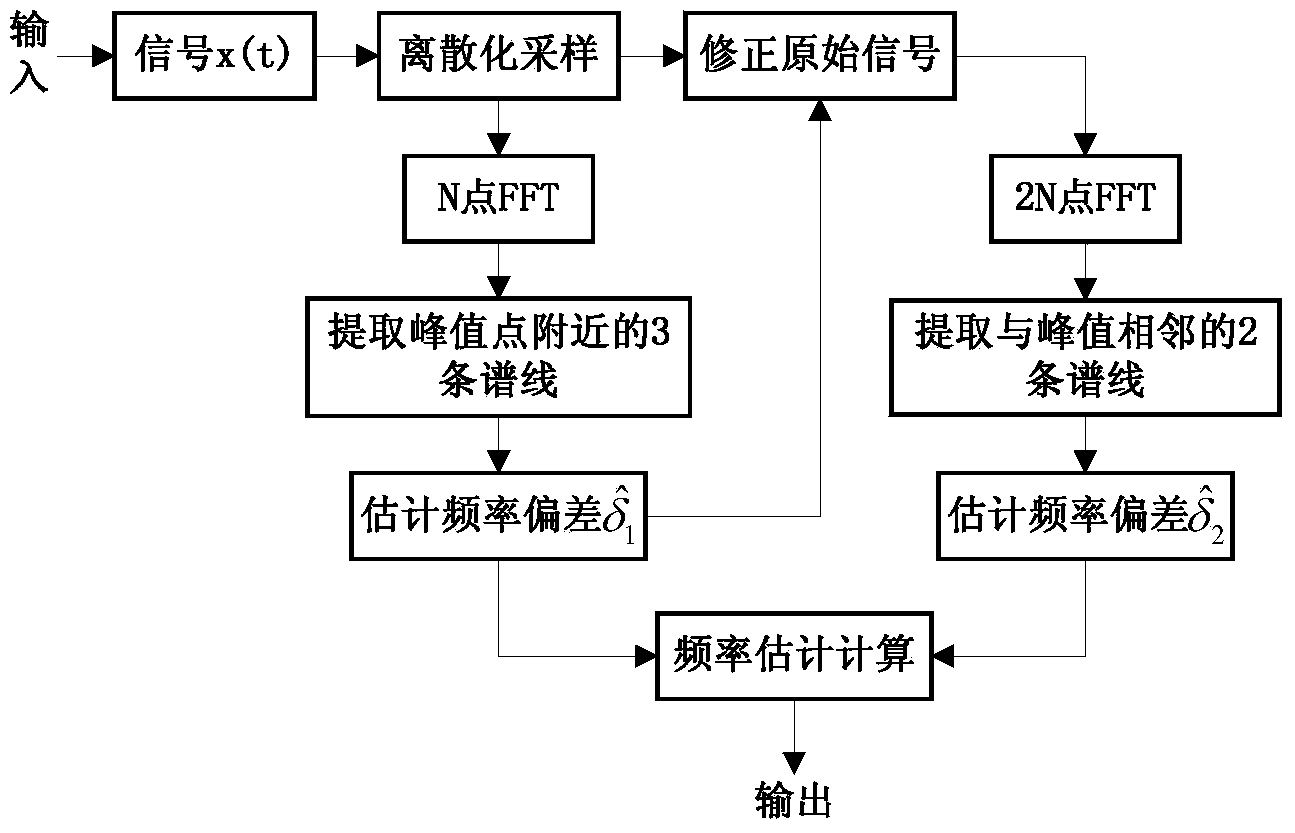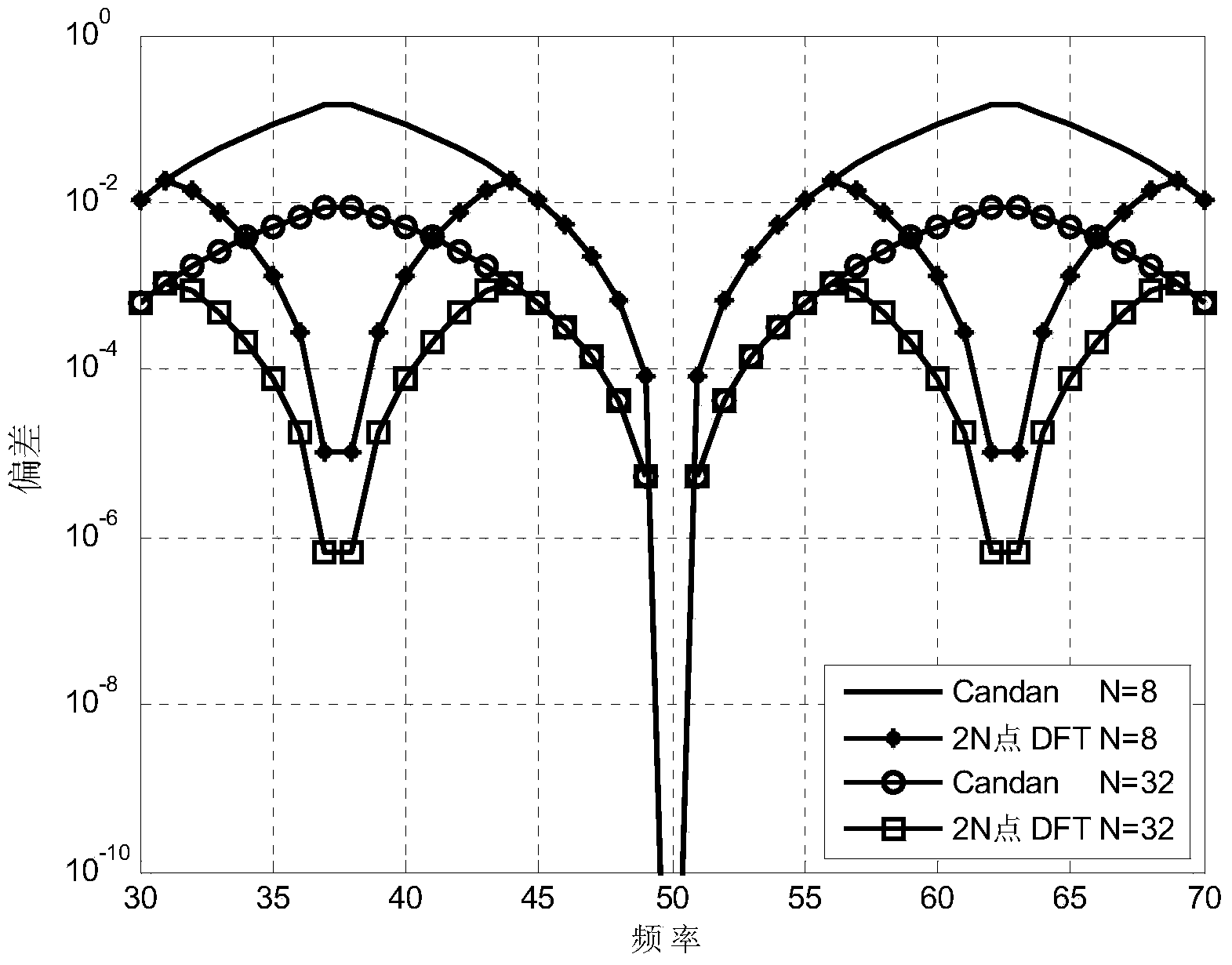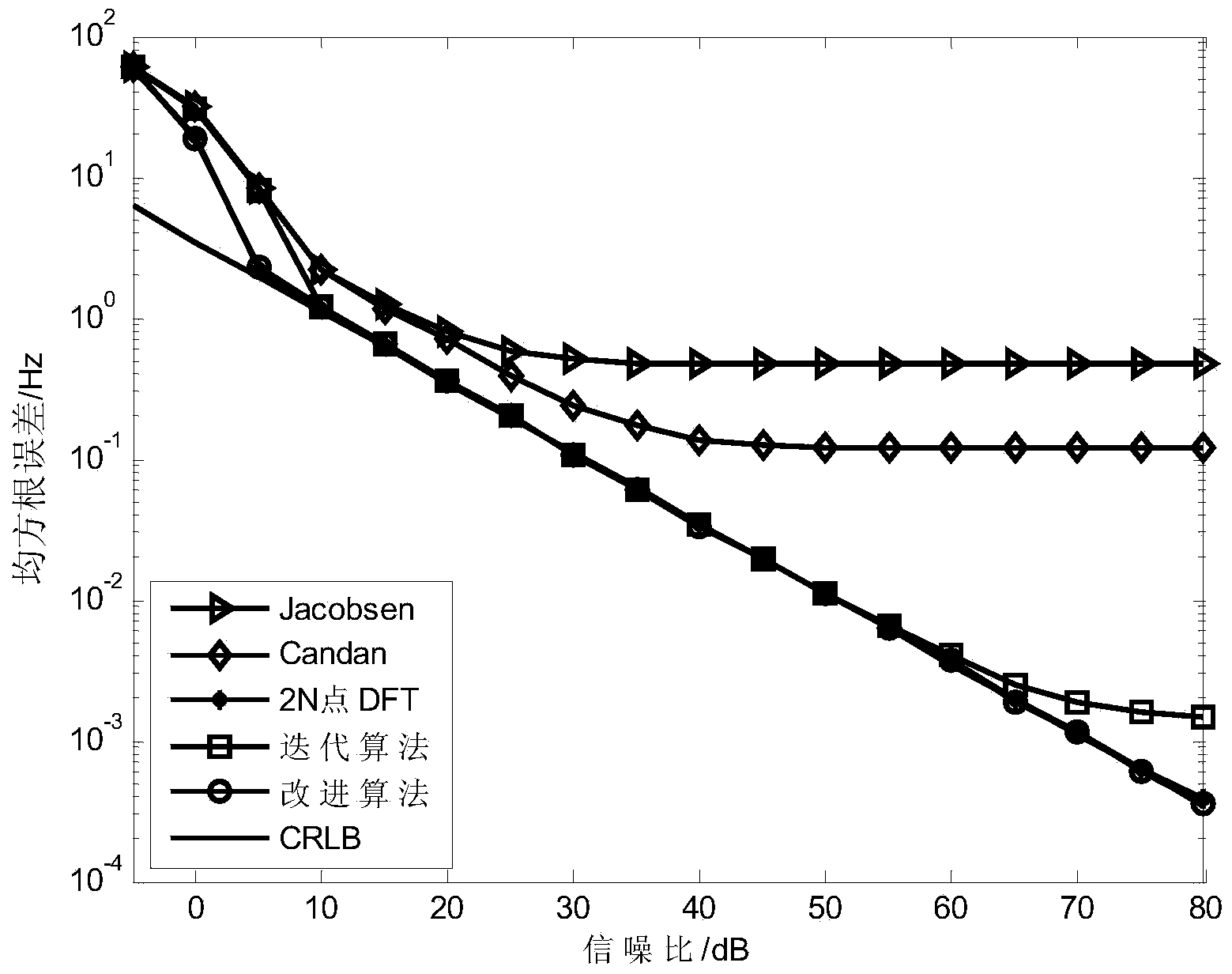Method for estimating sinusoidal signal frequency based on DFT
A frequency estimation, sinusoidal signal technology, applied in the field of signal processing, can solve the problems of wrong interpolation direction and reduced estimation accuracy, and achieve the effect of simple calculation and high performance
- Summary
- Abstract
- Description
- Claims
- Application Information
AI Technical Summary
Problems solved by technology
Method used
Image
Examples
Embodiment Construction
[0036] The present invention will be described in further detail below in conjunction with the accompanying drawings and embodiments.
[0037] according to figure 1 Shown, the concrete steps of the inventive method comprise:
[0038] (a) Necessary preprocessing of the signal for frequency estimation:
[0039] The signal x(t) is sampled at f s , After the sampling point is N, the discretized original signal x[n] is obtained:
[0040] x [ n ] = Ae j ( 2 π f f s n + φ ) + w [ n ]
[0041] Among them: A, f and φ respectively represent the amplitude, frequency and initial phase of t...
PUM
 Login to View More
Login to View More Abstract
Description
Claims
Application Information
 Login to View More
Login to View More - R&D
- Intellectual Property
- Life Sciences
- Materials
- Tech Scout
- Unparalleled Data Quality
- Higher Quality Content
- 60% Fewer Hallucinations
Browse by: Latest US Patents, China's latest patents, Technical Efficacy Thesaurus, Application Domain, Technology Topic, Popular Technical Reports.
© 2025 PatSnap. All rights reserved.Legal|Privacy policy|Modern Slavery Act Transparency Statement|Sitemap|About US| Contact US: help@patsnap.com



